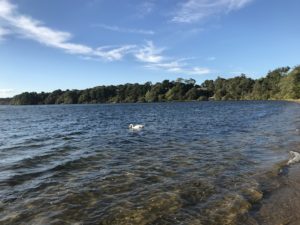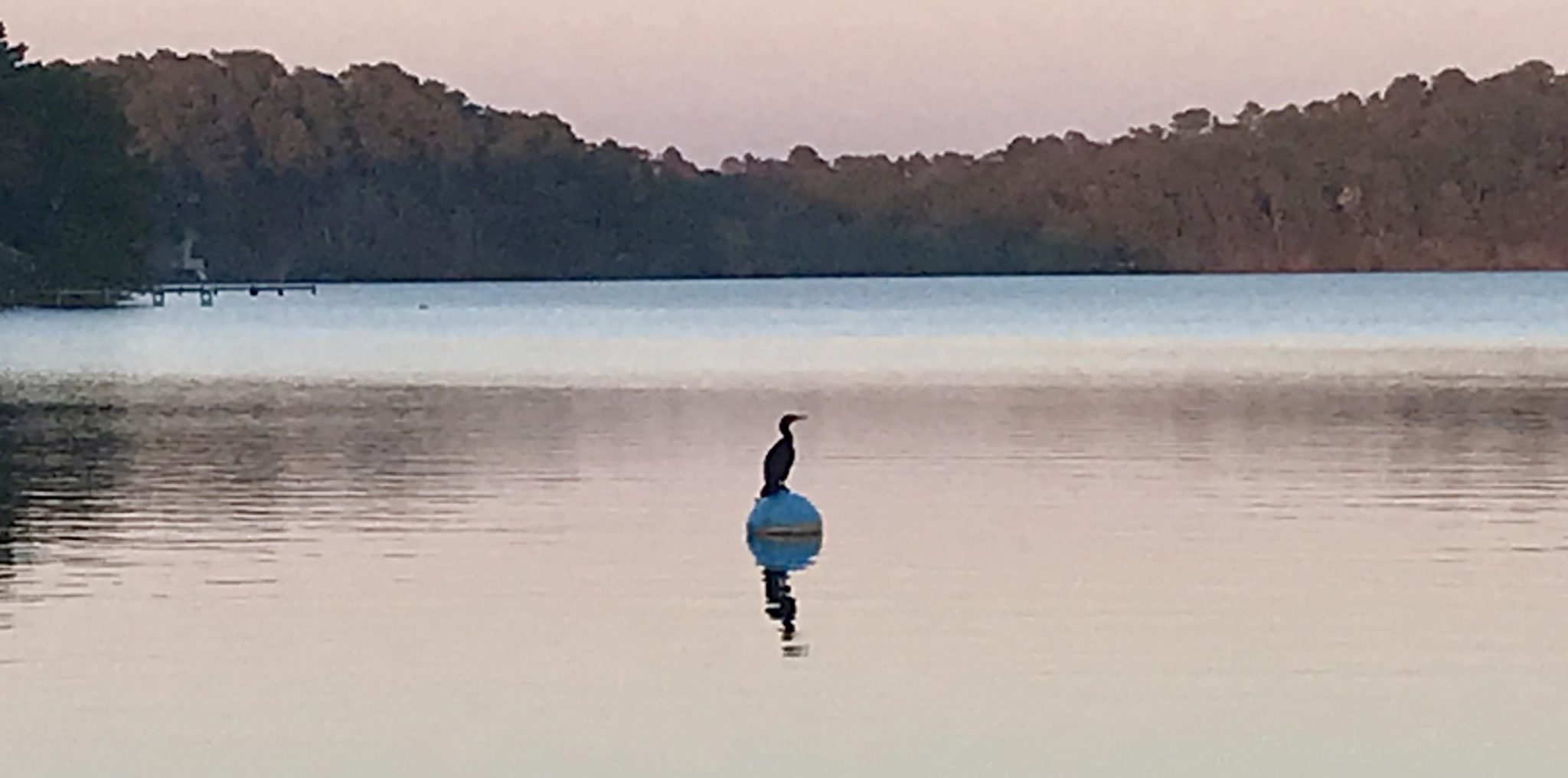By: Susan Patterson
In the summer of 2020, I first read about the spread of toxic algae bloom in some ponds on the Cape, a development linked to global warming that can sicken humans and other animals. I exhaled a deep sigh of relief that my neighborhood ponds in Harwich remained unaffected. Then one day in July of 2021, I noticed a small sign at Seymour’s Pond cautioning residents against swimming there due to a toxic algae outbreak. I was appalled. This experience was repeated when an identical sign greeted me at Bell’s Neck Conservation Area days later. Losing access to freshwater swimming is a devastating prospect for me. However, since this is an important wildlife refuge, I was most concerned for the survival of the waterfowl that depend on the reservoirs at Bell’s Neck and other local ponds.
Suddenly, I understood that taking photographs and writing about the scenes and animals I encounter is my way of trying to mitigate the devastating experience of loss: I am driven by a profound need to document the abundant beauty around me that I sense is vanishing.
The next day, I chose to swim at Cahoon’s Beach on Long Pond and happily no cautionary sign warned me away. I hadn’t swum there yet that summer and was delighted to reconnect with a familiar acquaintance. She is a cormorant I have christened “Maggie” because I have often found her perched on the stern of a small sailboat moored just outside of the swimming area and large black letters declare that the boat’s name is Maggie. On my first lap noodling past her, Maggie barked at me, uttering a deep guttural sound I didn’t know a cormorant could make. I took it as an announcement that she was aware of me and perhaps even asking, “Where have you been?” I chuckled and replied that I was glad to see her too. During my second lap, Maggie jumped down into the water and proceeded to swim and dive alongside me for the next 30 minutes! We remained within 6 to 10 feet of each other as I noodled and she dove leisurely around me. For my part, I couldn’t stop grinning at her. But then her departure really blew me away. Just as I moved for the shore to go home, she flew away toward the interior of the lake. I watched her dark shape recede in the sky until she suddenly reversed course, flying back toward the beach. Once she was close again, Maggie flew in a tight circle above me before heading back out to the deep water. It was as if she were saying, “I forgot to say goodbye!” I waved enthusiastically back at her, shouting out “Auf Wiedersehen:” until we meet again.
I see our visit as a clue offering insight into the nature of the universe: a reminder that I am not alone. It recalls for me tales of dolphins swimming companionably alongside humans in the ocean, something I’ve always longed to experience.
There are moments when I feel like a female Job, the victim of a confluence of terrible misfortunes. When I feel myself caught in a whirlpool of rising distress, I choose to redirect my attention to the wildness around me that soothes my spirit. The cormorant Maggie’s astonishing behavior delivered an infusion of joy just when I really needed it. Days later, on a walk to Hinckley’s Pond, I was entertained by the transformation of a stately swan into an ungainly, large white bird when she turned her rear end skywards to fish, webbed black feet flapping in the air. It amused me to send her the thought, “Watch a cormorant dive.”


